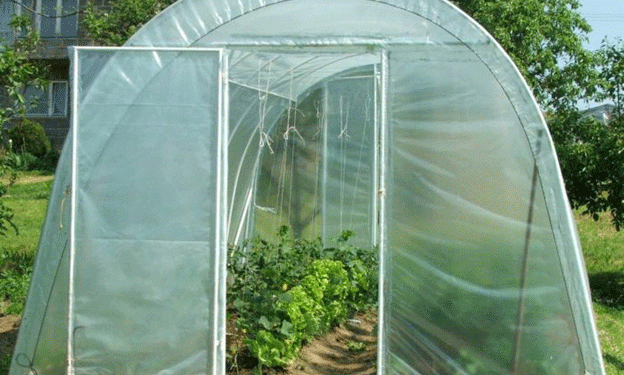Greenhouses offer controlled environments that extend growing seasons and improve crop yields. However, the success of a greenhouse depends heavily on the compatibility of crops and the management of temperature, humidity, and light. Poor planning can lead to plant stress, slower growth, and reduced yields.
Temperature Requirements for Common Crops
Each plant thrives within specific temperature ranges, and understanding these needs is key to effective greenhouse management:
- Eggplants: Soil temperature should be at least +18°C, with air temperatures around +20°C.
- Tomatoes: A minimum of +15°C for both air and soil.
- Cucumbers: Optimal nighttime temperatures are +16°C and daytime temperatures +18°C, with growth stalling below +10°C.
- Onions: Require a minimum of +10°C for successful growth.
- Celery: Grows best starting at +12°C.
- Peppers: Thrive at a minimum temperature of +15°C.
Crop Compatibility in Shared Spaces
Combining crops in a greenhouse can save space and resources, but not all plants are compatible.
- Tomatoes pair well with beans, beets, and melons. Beans enrich the soil with nitrogen, while melons share similar environmental needs.
- Peppers and eggplants should be kept apart due to their overlapping pest and disease vulnerabilities.
- Cucumbers can grow alongside corn and melons but need separate lighting zones due to their climbing vines.
Zoning for Multi-Crop Greenhouses
For greenhouses housing different crops:
- Zoning with barriers: Separate crops with distinct temperature and humidity needs using physical dividers.
- Compromised climate zones: Maintain an average daytime temperature of +25–26°C and nighttime temperatures of +15–19°C, with 70% humidity. Mulching and precise irrigation can help regulate these conditions.
Efficient Use of Space with Early Greens
Incorporate early-harvest greens between rows or at the edges of beds for an added yield:
- Spinach and lettuce grow quickly and can be harvested before the main crops expand.
- Chinese cabbage, radishes, and herbs such as dill, basil, parsley, and celery provide additional income and enrich the soil before the primary crops reach maturity.
Strategic greenhouse planning—incorporating temperature regulation, zoning, and companion planting—maximizes efficiency and productivity. Early greens and careful crop pairings can enhance the functionality of your greenhouse, making it a sustainable and profitable venture.










